
Stand up for an iconic fishery and forward-looking management
Last spring, as the iconic Skagit winter/spring steelhead season was winding down (it closed a few days early in 2025), Washington steelhead anglers got some terrible news: The funding the supports Puget Sound Salmon and Steelhead Monitoring, the program that makes the Skagit and Sauk wild steelhead fishery possible, was at risk of not being renewed by the legislature.
We worked to drive public comments supporting the program, but the budget shortfall was too big and this important program didn’t survive the chopping block.
Without this funding, the Skagit and Sauk wild steelhead winter/spring season isn’t possible and other critical programs supporting Puget Sound steelhead will be lost.

Image: Greg Fitz/TU
We wrote about the situation in our 2025 legislative wrap-up, but we aren’t giving up. This work and the Skagit season are too important to the future of steelhead fishing and conservation in Puget Sound to let them slip away.
Now, we’re working with our grassroots to carry a critical message to Washington legislators: The Skagit winter/spring fishery, and the Puget Sound Salmon and Steelhead Monitoring that makes it possible, not only needs to be reinstated as soon as possible, they need a permanent source of funding so this essential work isn’t at risk going forward.
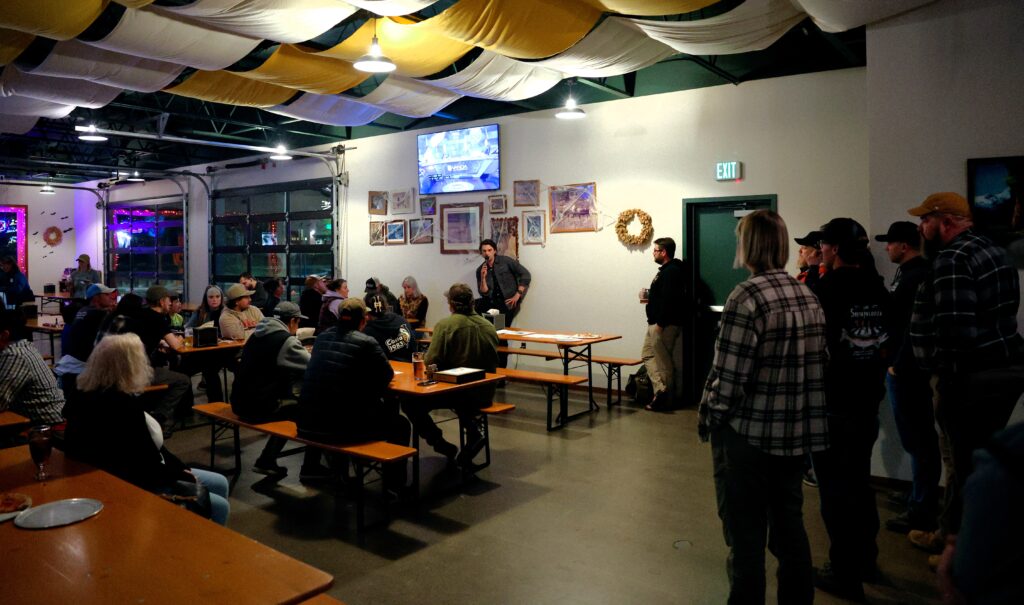
Image: Bridget Moran/NSTU
In late October, the Chapter hosted a letter writing event in Bellingham with our Washington Policy Director, Alexei Calambokidis. Stay tuned for additional opportunities to get together with other anglers and have your voice heard.
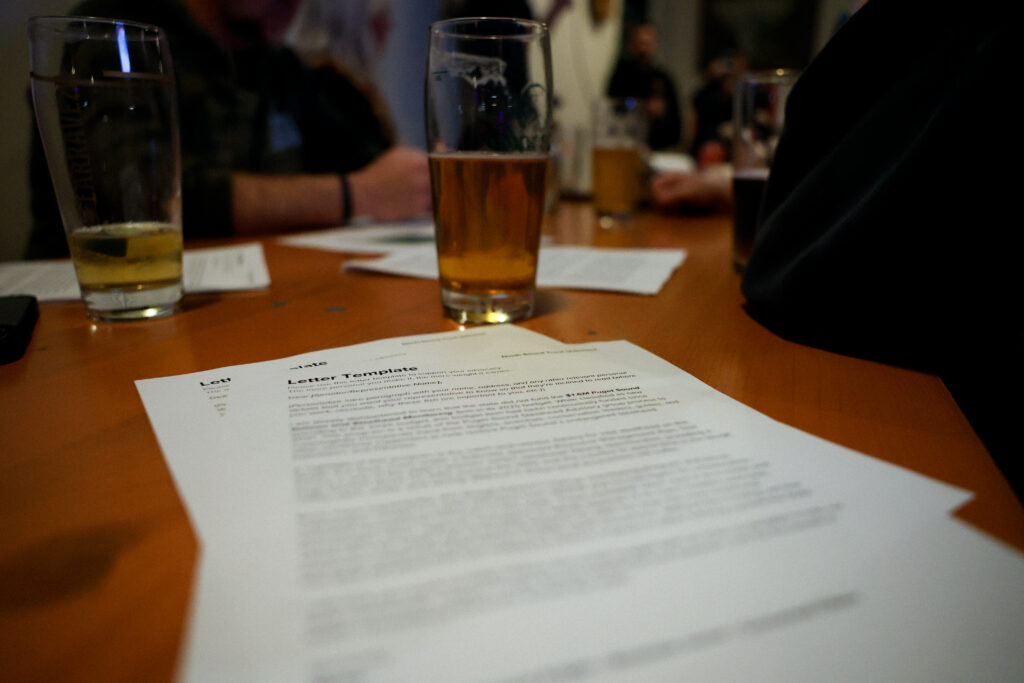
Image: Alexei Calambokidis/TU
The Quicksilver Portfolio
Between 2017 and 2020, the Puget Sound Steelhead Advisory Group (PSSAG), an ad-hoc group of anglers, guides, scientists, and conservationists, worked together with WDFW managers to develop a forward-looking framework to advance watershed-specific conservation, fishery and hatchery strategies for Puget Sound steelhead.
The resulting plan is known to many of us as “The Quicksilver Portfolio,” but legislators and fishery managers know it better by its official budget name “Puget Sound Salmon and Steelhead Monitoring.” (When writing letters to your representatives, it is critical to use the program name they’ll recognize.)
PSSAG consisted of a wide variety of stakeholders and the resulting plan provided a balanced approach where some places would provide hatchery fishing and harvest opportunities, and others would be prioritized for wild fish recovery.
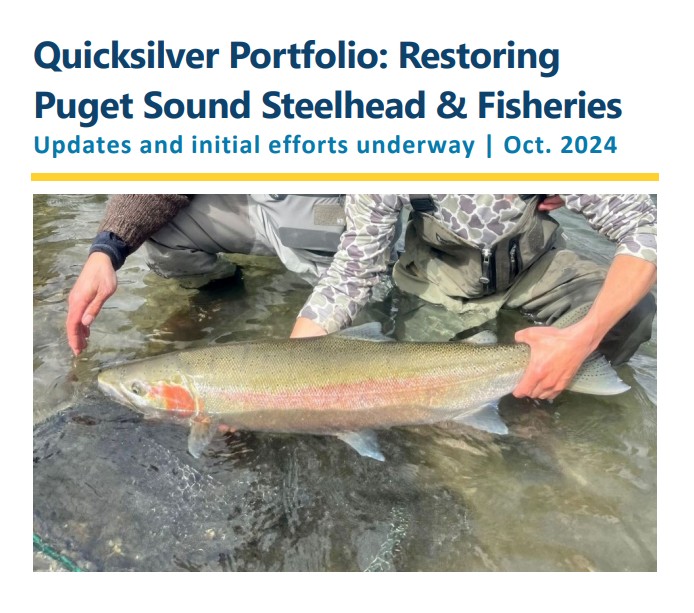
The return of the beloved Skagit and Sauk winter/spring wild steelhead fishery is one of the Quicksilver Portfolio’s crown jewels, but the program also expanded steelhead monitoring in the Nooksack, Samish, Stillaguamish and Snohomish waters, and outlined the development of sonar and video run counting for the Skagit, Samish and Nooksack Rivers. The program also supported the new summer run broodstock program on the Skykomish River to replace the previously planted out-of-basin Skamania stock.
This work is critical to eventually expanding fishing opportunities and understanding steelhead populations and trends in Puget Sound.
TU staff participated in PSSAG and the development of the plan. And we’ve shown up at the legislature in 2021 ($1.68M), 2022 ($3.8M) and 2023 ($1.6M) to advocate for the program’s continued funding.
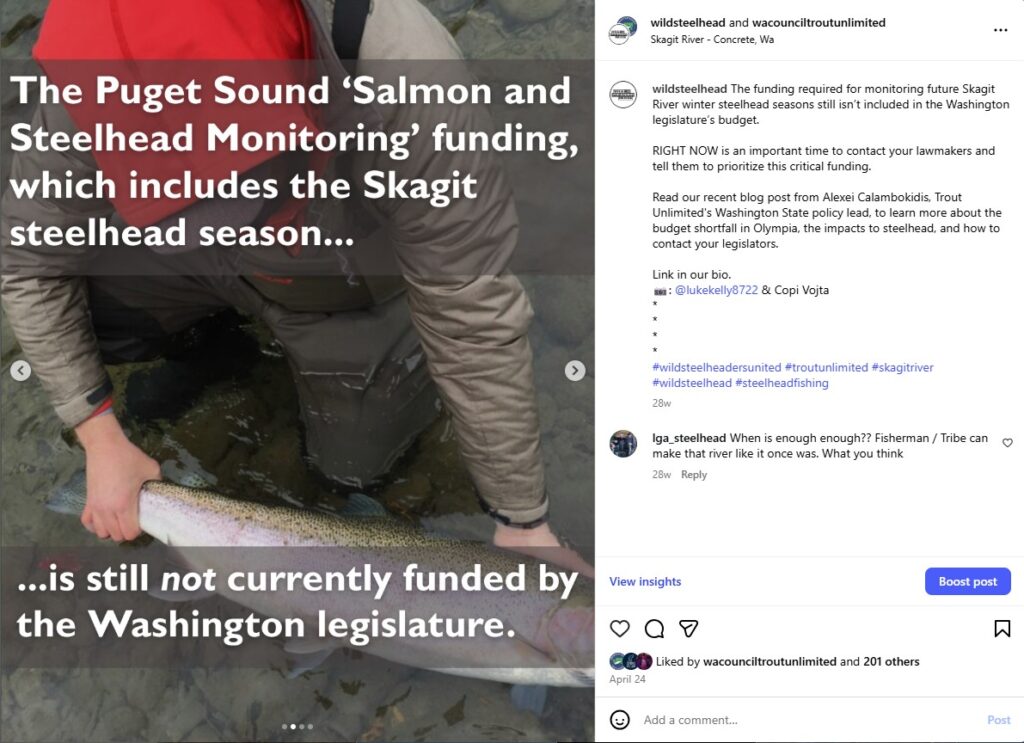
Of course, we advocated this spring, too, but statewide economic shortfalls were too much to overcome. But with the help of our volunteers and steelhead anglers, we are committed to getting this work prioritized and supported once again.
The Skagit and Sauk: Better fisheries and local economies
Even though Puget Sound steelhead were listed under the Endangered Species Act in 2007 as ‘threatened,’ populations in the Skagit and Sauk have been able to support the iconic wild steelhead winter/spring fishery in recent years under plan developed by co-managers and approved by NOAA through 2032. As a result of a separate legal settlement, WDFW ended the basin’s Chambers Creek hatchery plants in 2014.
While the fishery isn’t perfect, it represents an important advancement in sportfishing management and deserves to be celebrated and funded.
Instead of operating impacts to a single escapement goal like the MSY model, the plan has scaled tiers of allowed impacts aligned with pre-season run forecasts. Basically: These abundance-based harvest rates establish if, and how much, fishing will be allowed during a season by recreational anglers and tribal fishermen.
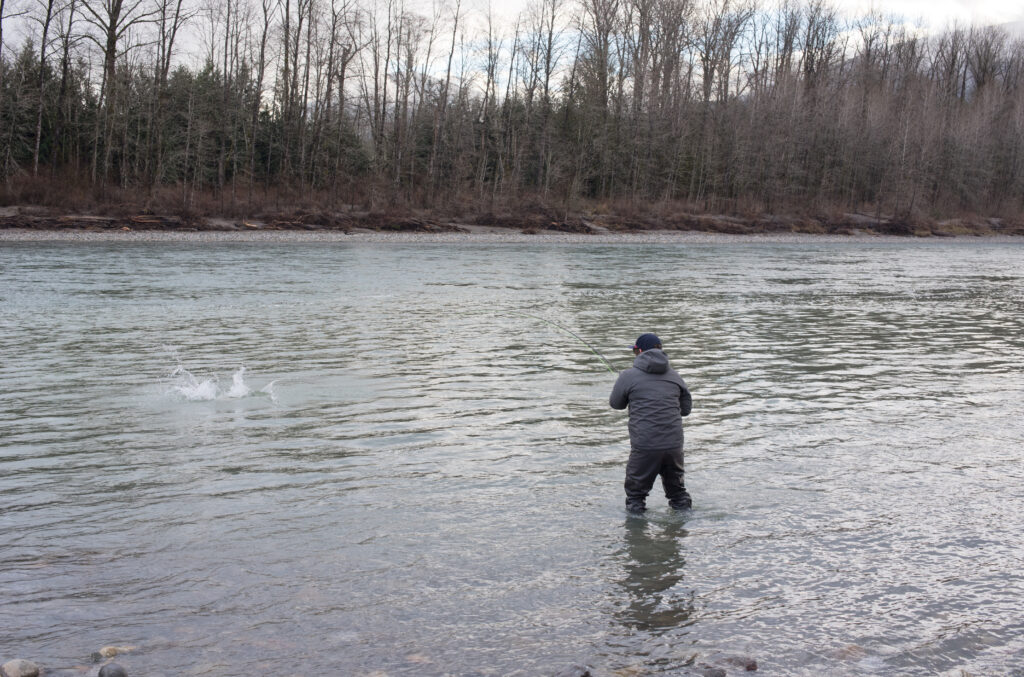
Image: Copi Vojta
When a season is allowed, extensive monitoring and daily creel is required to chart impacts and estimated steelhead returns in real-time. Sometimes, like last season, this allows managers to close the fishery early if impact limits will be met instead of finding out months later that the river missed escapement or too many fish got handled, like we saw on the Quillayute system this spring.
This combination of monitoring and structured impacts attempts to balance ESA wild steelhead recovery goals with fishing opportunities while giving anglers clarity on what a season might look like. It is a far cry from fisheries like those on the coast where inadequate monitoring, a lack of management plan implementation and hatchery management plan development, and 40-year-old escapement goals guide fishing seasons instead.
Healthy steelhead fisheries also benefit local communities, and the Skagit and Sauk winter/spring season is no exception. These rivers were closed for years, but a re-established winter/spring fishery means that anglers are once again arriving to rent hotels, AirBnBs and campsites at Howard Miller. In town and on their way to and from the river, they grab groceries and pick up a burger, pizza, and some beers after a day on the water. A sustainably managed fishery can also provide long-term business for fishing guides and regional tackle and fly shops.
The scale of this economic impact is substantial. This spring, NW Sportsman magazine reported “…that the towns of Darrington, Concrete and Marblemount would take an economic hit from the loss of the fishery in 2026. A WDFW natural resources economist estimated that this year’s 11,122 angler trips yielded $2.3 million in local spending, easily exceeding the $1.6 million the agency had requested in funding to monitor and police this fishery as well as other salmon seasons in greater Puget Sound.”

Image: Jonathan Stumpf/TU
Take Action: Contact your legislators
The Skagit winter/spring wild steelhead fishery is a regional treasure that draws anglers from far and wide. Like all steelhead fisheries, crowding can be a challenge and adaptive management will be required to keep improving outcomes for wild fish and anglers.
Importantly, it is a fishery that serves as an example of how steelhead fishing and conservation goals can be aligned in the 21st Century. But it, and the monitoring program that supports it, needs funding to continue.
Take time to check out North Sound TU’s guide on contacting your state legislator. Tell them to permanently fund Puget Sound Salmon and Steelhead Monitoring to ensure that seasons on the Skagit and Sauk, and all the other important work guided by the Quicksilver Portfolio, are supported and prioritized by managers.


